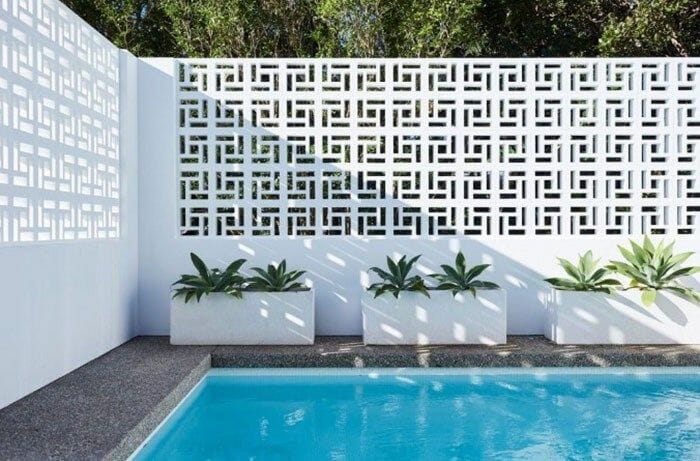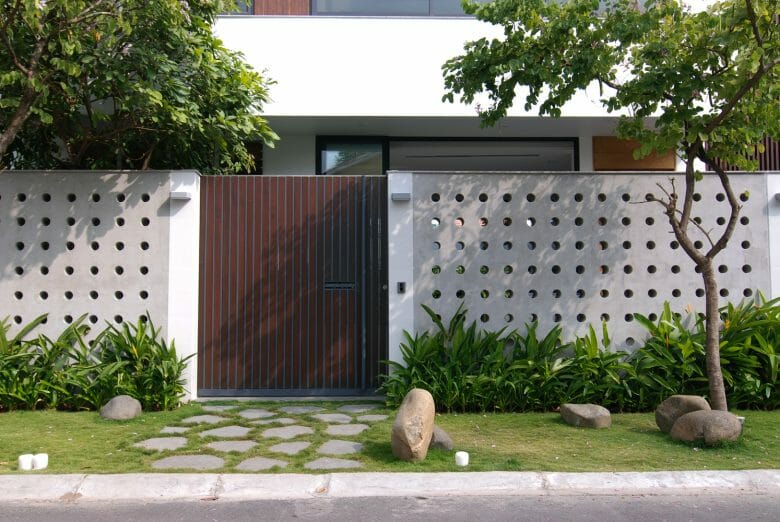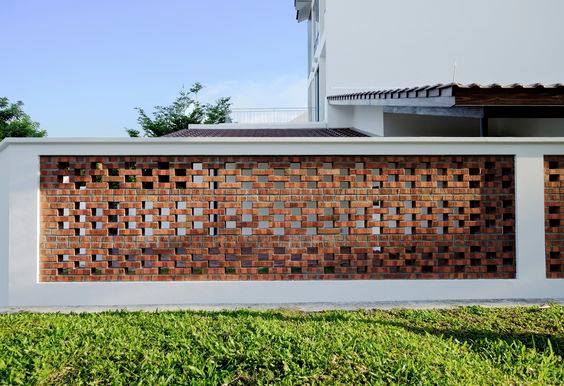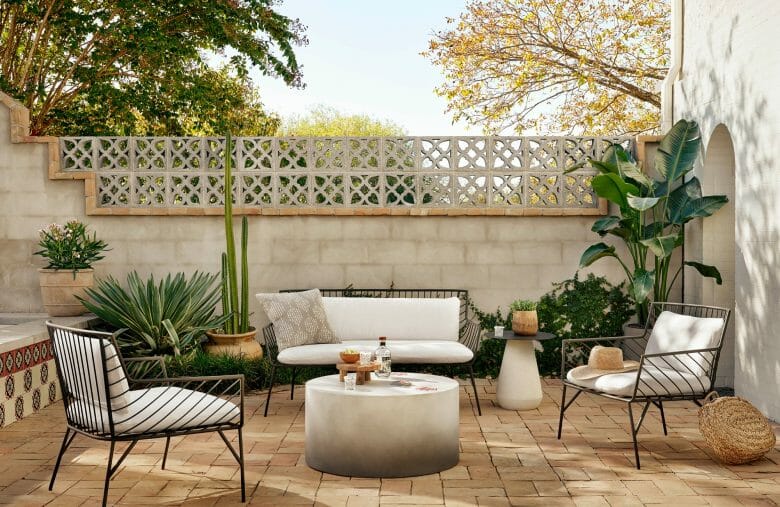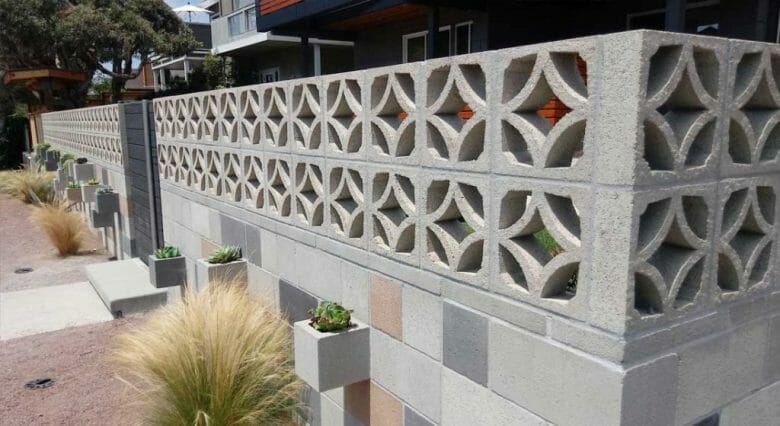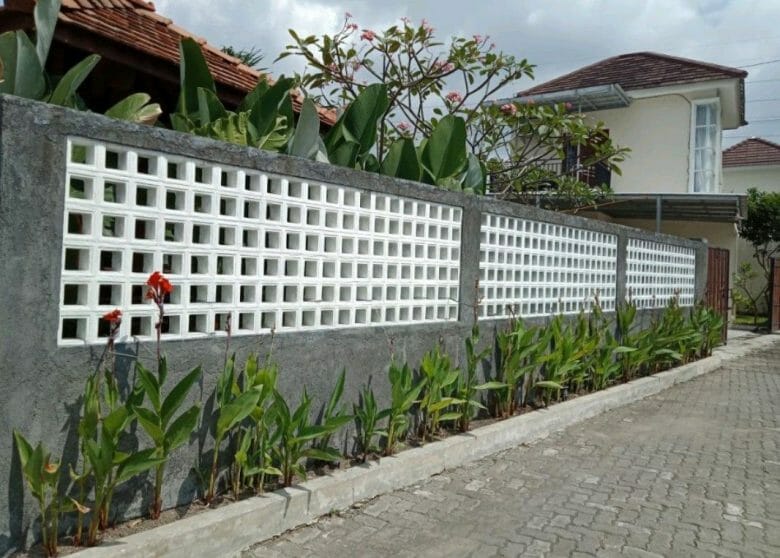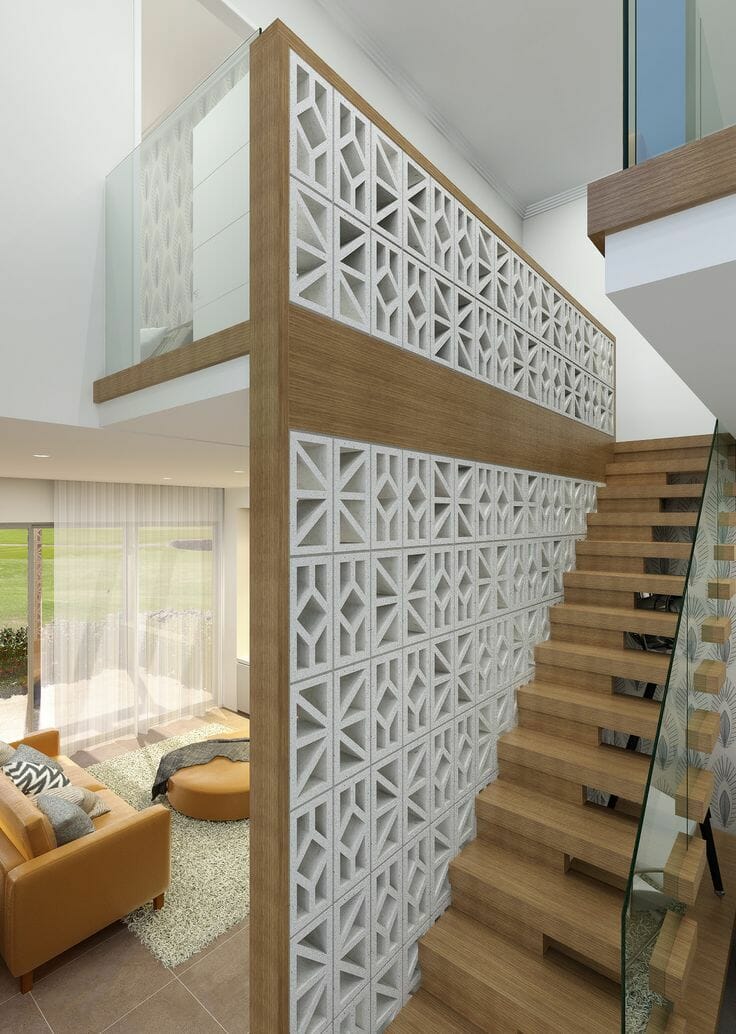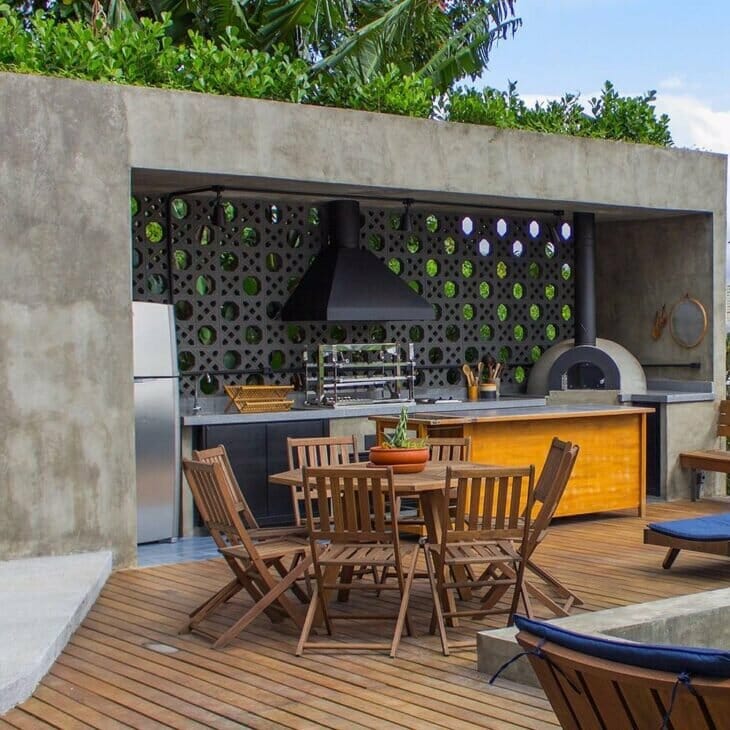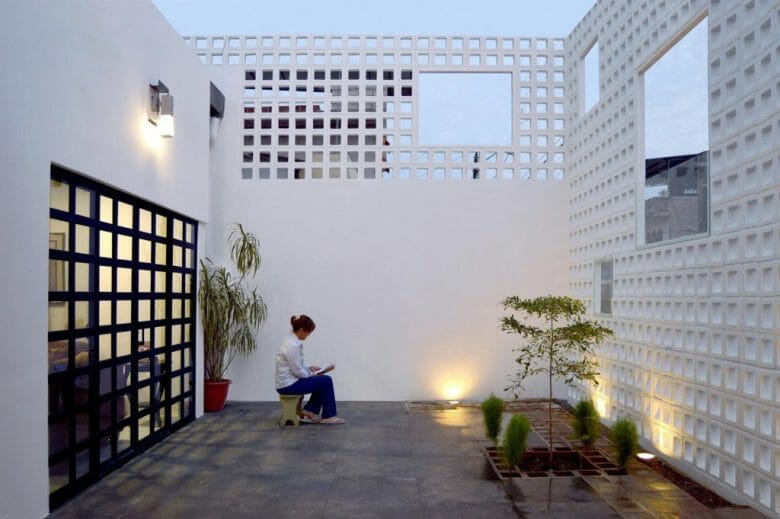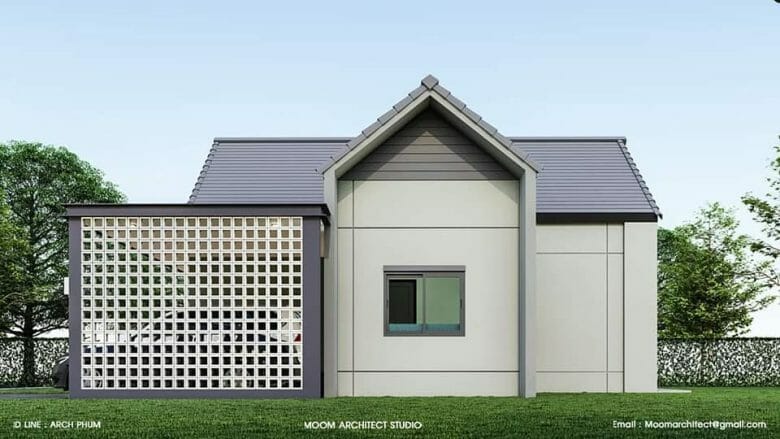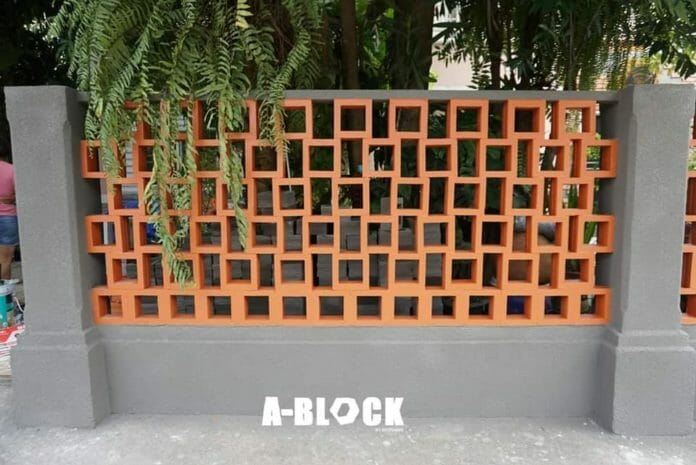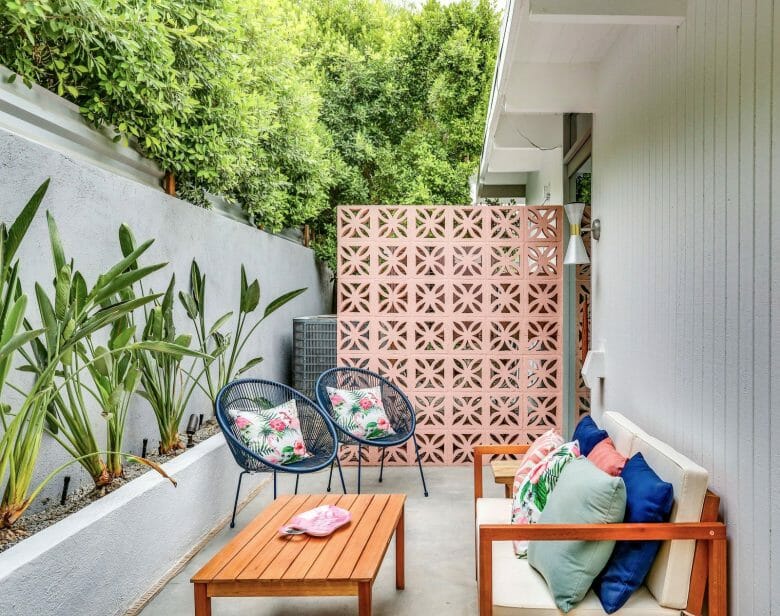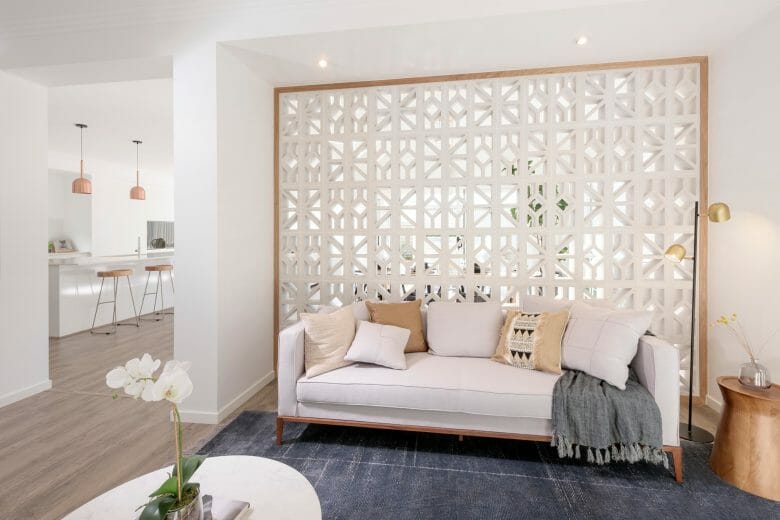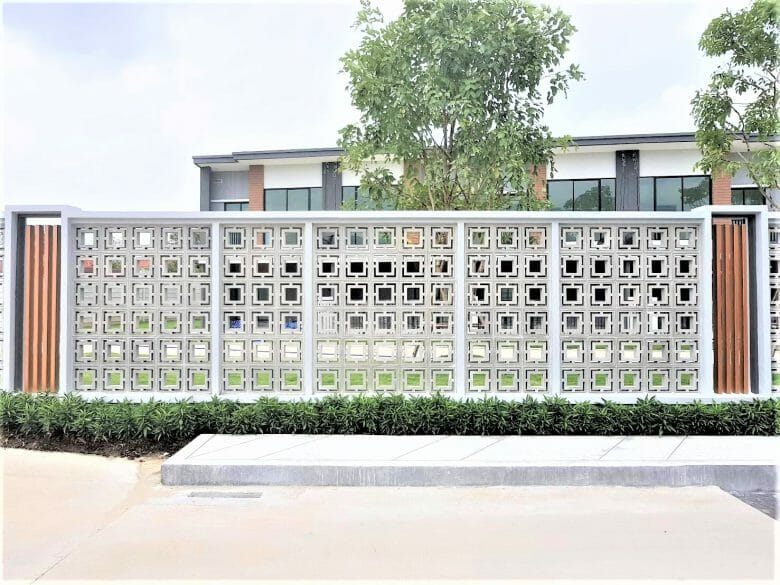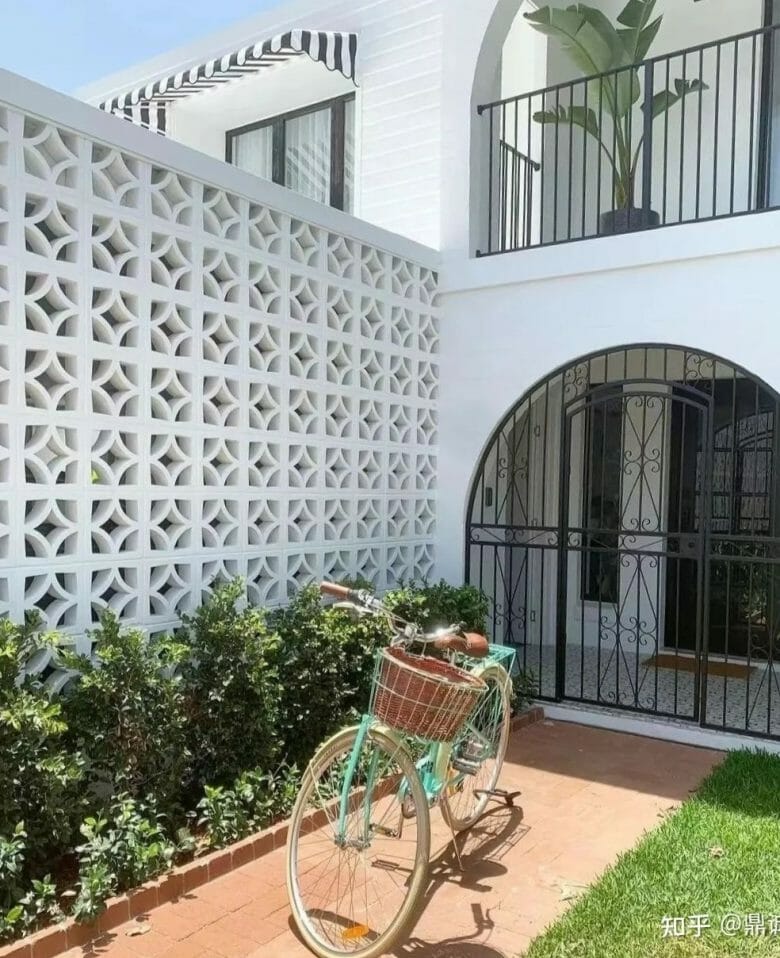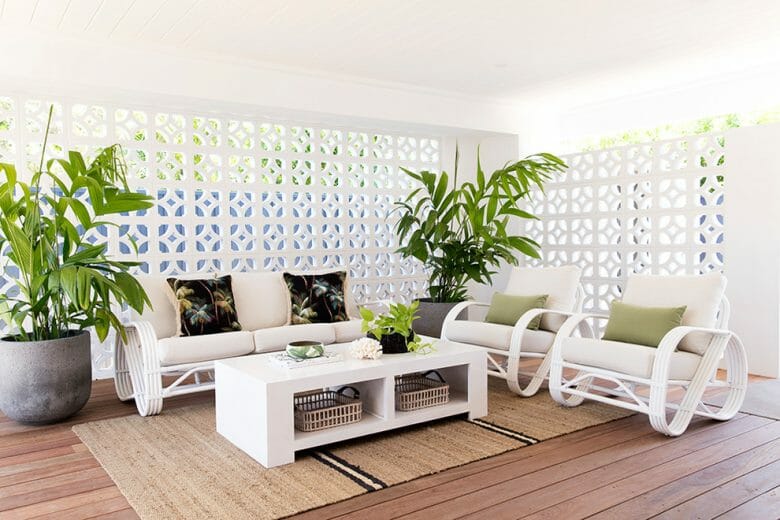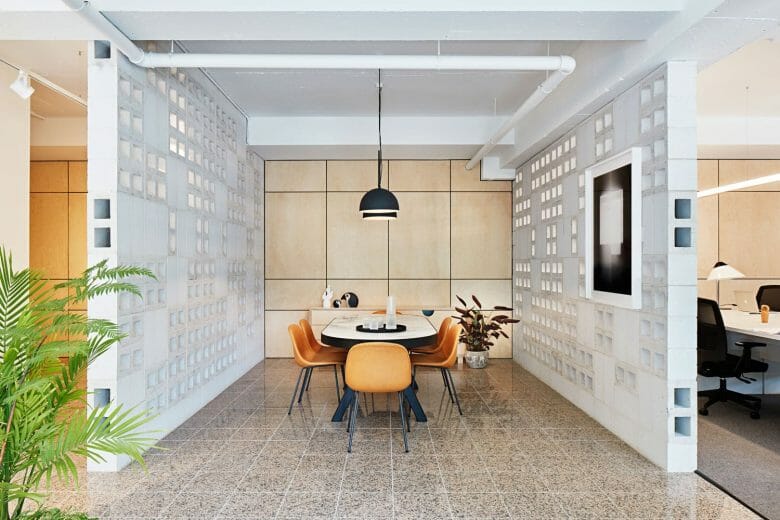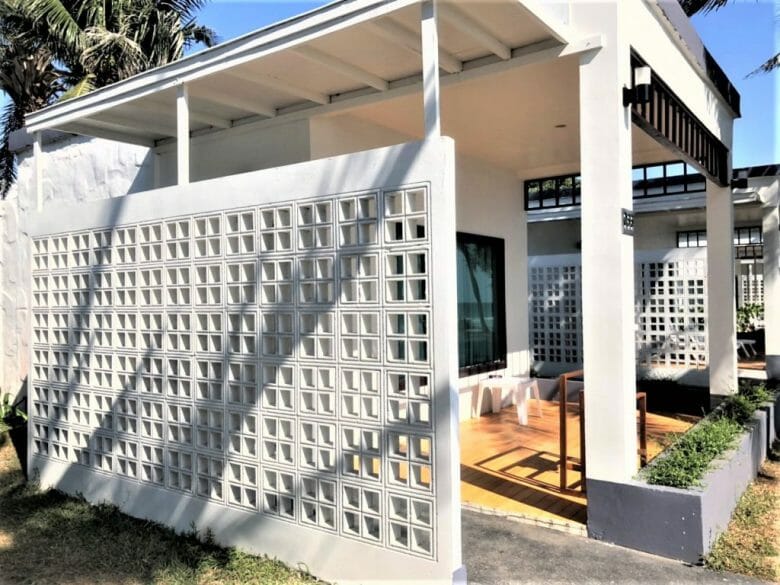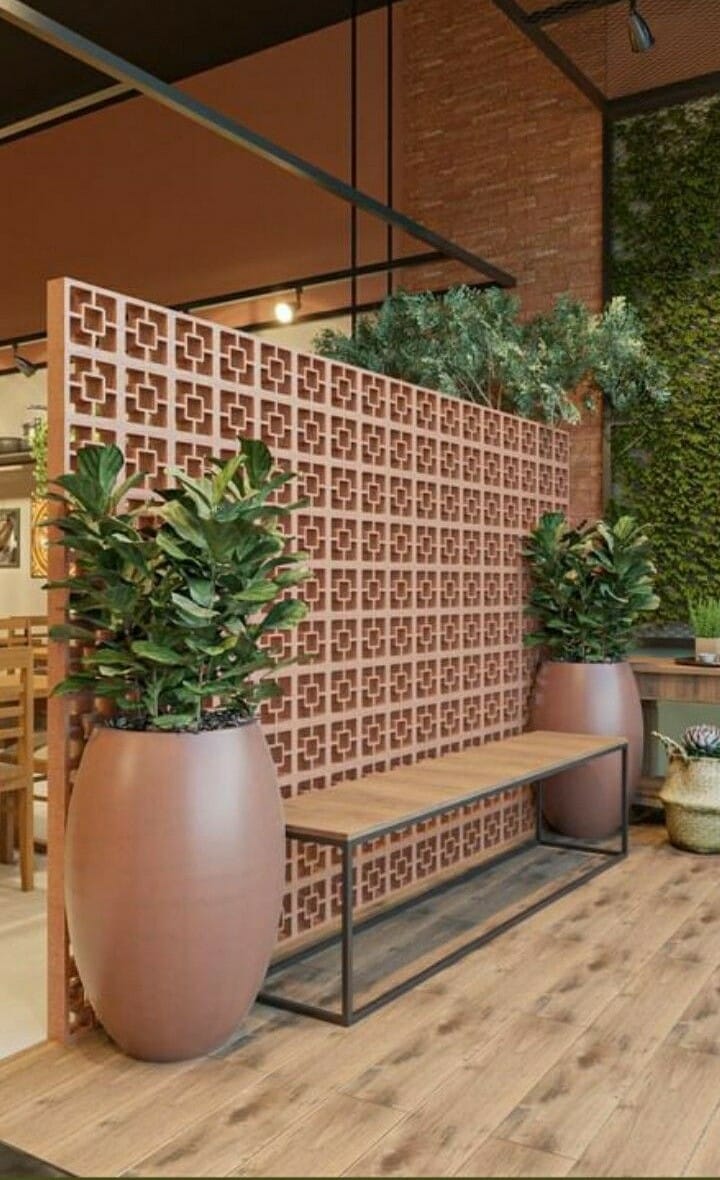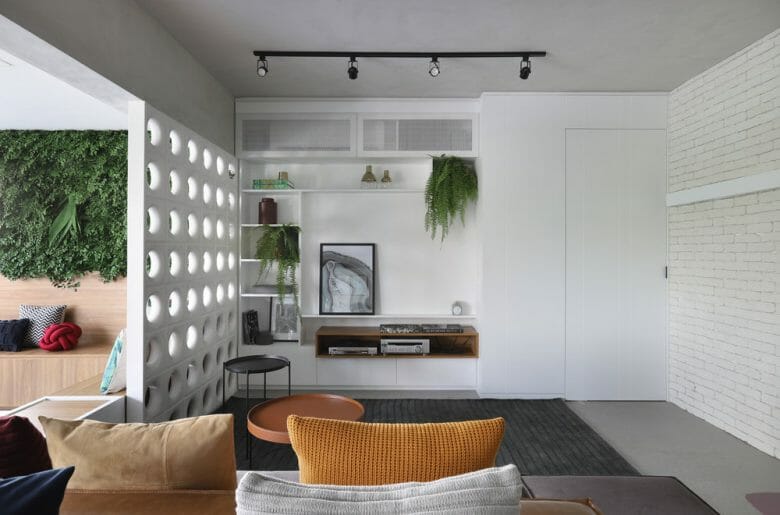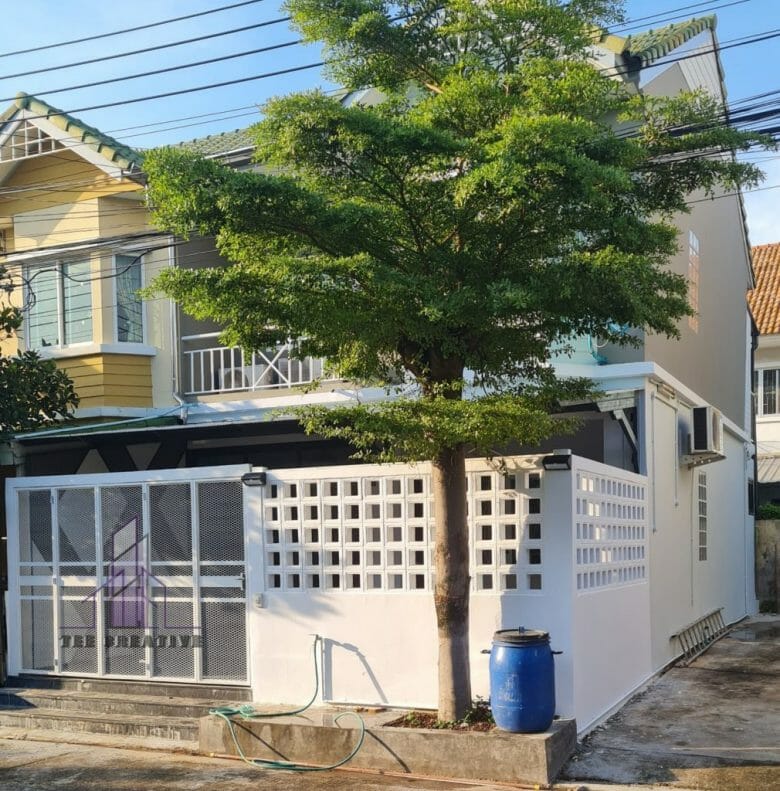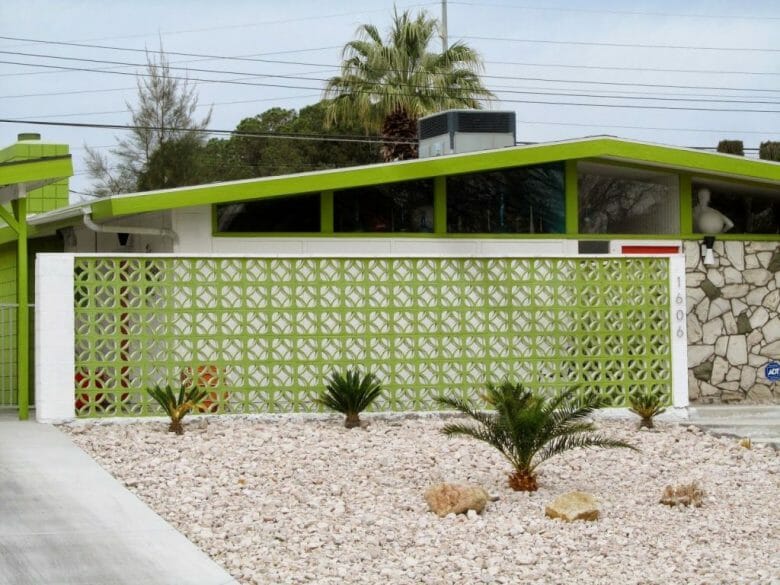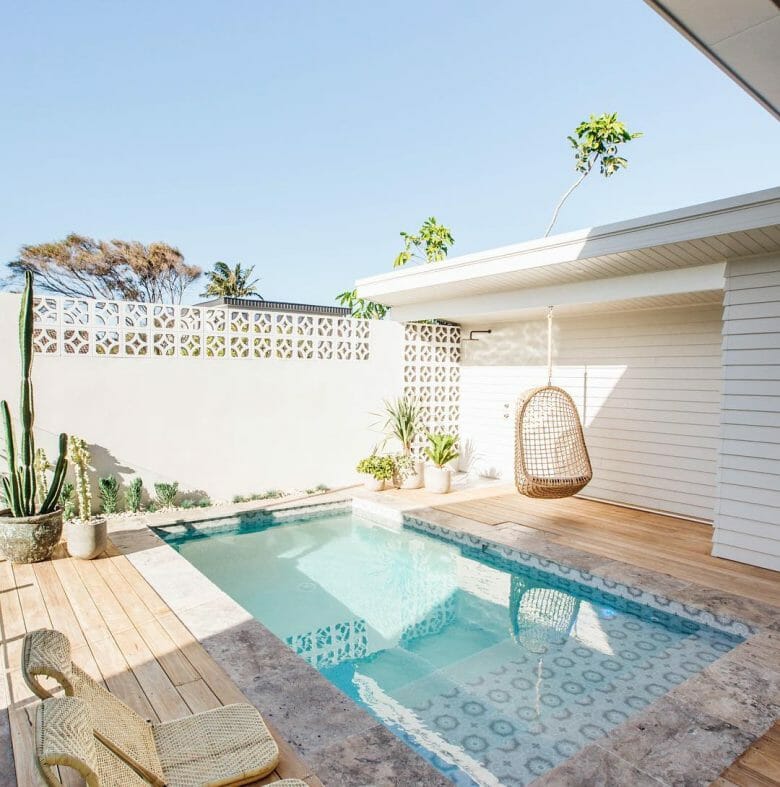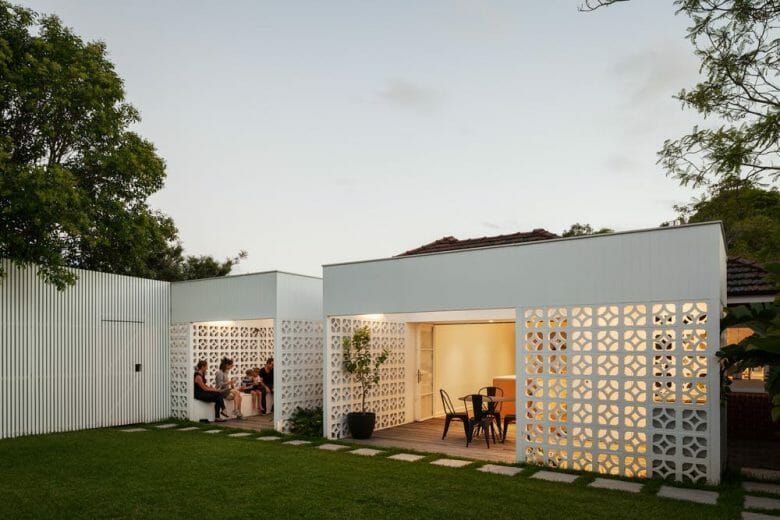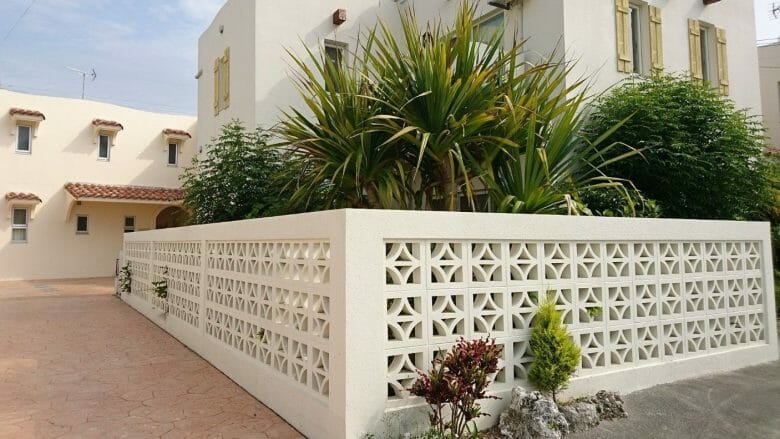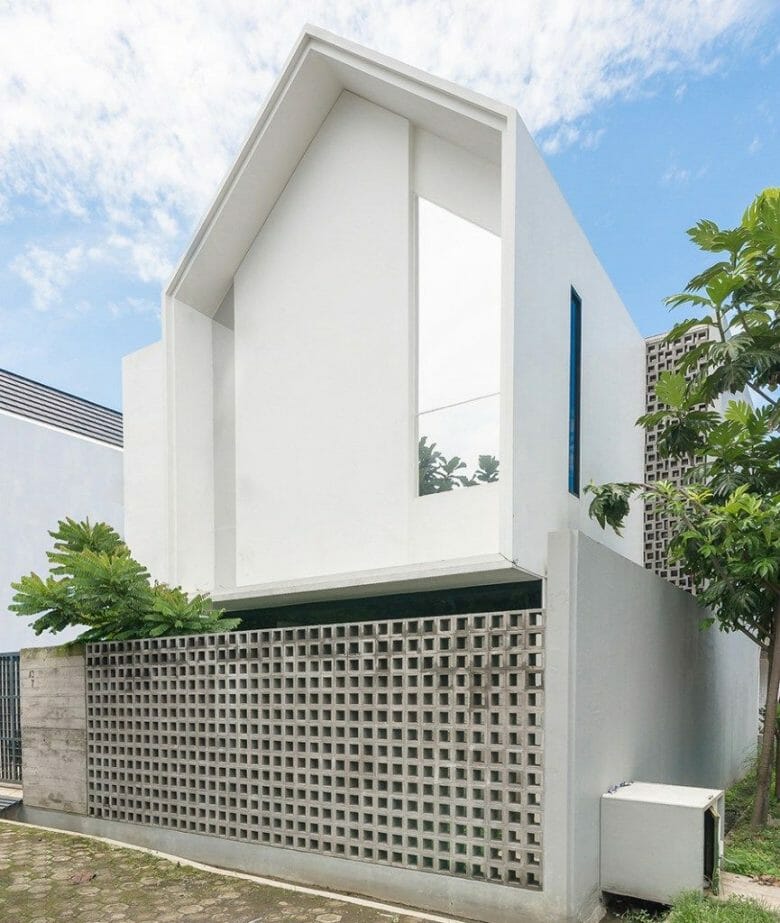
Although breeze block walls were created with the intention of keeping outdoor living spaces cool, they have evolved over the years to include different designs, materials, and textures.
Not only do breeze block walls promote air flow, they serve as interesting and appealing exterior design elements, fitting into all types of design styles.
Breeze block walls are typically only found in warmer climates. Breeze block walls were first invented thousands of years ago to keep people cool and comfortable in warm, outdoor spaces.
Today these walls are often made of hollow cement blocks that come in a variety of patterns. However, they can include other materials like screen and iron.
Breeze block walls were extremely popular during the ’50s and ’60s; as such, you’ll commonly see them used on mid-century modern homes. They have recently resurged in popularity, proving their staying power.
Using breeze blocks to create partitions between cars in the garage or creating the fence in front or side by side the house is a popular idea but still, also very useful idea.
Instead of using the heavy materials such as steel, iron, to build the gate and fence, you can completely use artistic cement blocks.
With preeminent features such as anti-moss, good waterproof, it is very good to use for the outdoor areas. This is one of the designer’s idea of using breeze block for fence and out walls for an urban residence.
.
.
.
.
.
.
.
.
.
.
.
.
.
.
.
.
.
.
.
.
.
.
.
.
.
.
.
.
.
.
.
.
.
.
Credit: Pinterest

